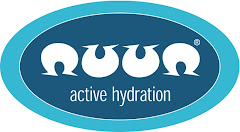
"You do your worst and we will do our Best." Winston Churchill - 14 July, 1941
A lot of things went into a great race this year. Some people would say luck and I wouldn't disagree, but I attest that luck is simply preparation plus opportunity. In finishing the race last year, I will eternally celebrate. This doesn't mean a 41 hour time was what I was looking for. Truthfully, I was both looking for any time less than 48 (legal finish cutoff) and the course record. When I realized how tough the race really is, surviving seemed enough.
So in finishing this year with 35:15:37, I have been inundated with the question, "How in the world did you take off 6hr 29min from your previous time?"
So here are my answers:
1. Major changes in calendar training.
In 2007, I focused on climbing, climbing and more climbing. While my physical build lends itself more to flats, I invested in hills and mostly the ones 6% or steeper. In 2008, I focused way more on long flats and individual time trial-ing training. I still did climbing very regularly, but far fewer climbing intensive events. We also changed our weekly ride schedule to include tons of 125 mile single day rides. Many weekends were 250 plus (one day spinning, one day long/fast and one day climbing). I also continued the tradition of zero drafting from July 1 on.
2. Equipment, Equipment, Equipment!
There is no substitute for a triathlon/time trial aero bike. There is no substitute for a pure climbing bike. Trying to ride a hybrid for the whole course is silly. In 2008, I spent more than half of the 508 on a Cervelo P2C tri setup and it paid off big time, even more so with tail winds (32 mph plus plus). Also, I wouldn't have traded my Madone for anything on Townes or Sheephole, priceless. You have a SAG van, use it for a bike swap..
3. Psychological training
As previously mentioned, I sought out a skilled sports psychologist who helped me prepare in depth for the mental adversity involved in racing 508 miles non-stop. I cannot put a price on preparing in advance for the mental stuff that comes late and with fatigue. You cannot just train your legs. I promise you (again) an upcoming post specifically on the topics we covered for mental prep. on adversity.
4. Late season peak & build up method
2007 was event based. I did doubles and triples. I did long rides on one or two days a week in preparation. I also did hard, intensive, short climbs. But after a huge event, I usually took the rest of the week off with big miles in the bank. This year I followed Arnie Baker's advice and used my weekly mileage as the goal, meaning rather than do all the miles in a couple days, I rode 5 or 6 days of the week and knocked down progressively higher mileage with more and more elevation gain. So one week was 250 miles with 10k climbing. Next week 300, next week 400 and so on. Eventually I got to the 500 plus mark with 30k climbing in a week. This was especially valuable as the build up to this point assures you fight off IlioTibial band frustrations and other overuse injuries. Stacking too many miles or feet of climbing too fast will cut your season off fast and send you right to physical therapy. Not getting your legs ready for a ride of this magnitude can hurt you for six months, easy..
5. Course previewing & historical weather patterns
I knew a ton of the course in 2007. A ton meaning some of Mojave and everything from the 395 east to Baker. Everything else was a mystery, including how the weather plays normally during both the day and night. Duh. So this year, I took the time to preride some tougher than tough sections (of course, I did pre-ride Townes last year) - however 2008 included Kelbaker and Sheephole, which are both critical sections. I also drove the entire course from the 395 to finish and participated in a double century tester around Joshua Tree earlier in the year. All of this ensured I knew the terrain and wind patterns for both day and night far better.
What does this mean? If you ride fast enough in the first 100, there are tailwinds to seize that can deliver you to Townes early. Yes, getting into DV early will cost you as the south winds won't die until midnight.. but the gain is much bigger than the loss. The same is true pre-dawn to Baker.. Big time savings if you can avoid hypothermia.
So thats my big "one to grow on" for 2009 racing. Temperature control and layering for both day and night. I got real cold coming south of Shoshone after 4am. Baker was within reach at dawn and this was my fastest section in 2007. I got cold, so I got sleepy. Systems shut down and hurt came in. Before long I was laying on the side of the road shivering in a sleeping bag. Dying to sleep and not even being close. Thanks forever to the boys for giving me just enough and getting me back out into the fight. I could've ridden faster but I was riding. Then the sun came up and the tempo picked up.
All for now
Mike





No comments:
Post a Comment